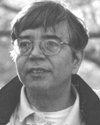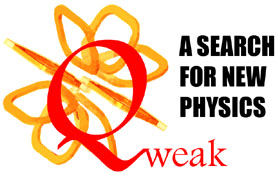
John Michael Finn, Professor of Physics
Three quarks for Muster Mark -Finnegan's Wake
My recent research at the College of William & Mary has focused on low energy tests of the Standard Model of subatomic physics. This model, although capable of describing the known particles and their interactions, is somewhat ad hoc in nature. For example, it incorporates, but does not explain, the symmetry breaking observed in nature, or tell us how to restore symmetry. Many scientists believe there is at least one more layer of structure. In our research, we look for low energy clues to physics beyond the standard model.
I came to William and Mary in 1985 to assist with the development of the physics program of the Thomas Jefferson National Accelerator Facility (Jefferson Lab). The excellent teaching environment here also attracted me. Being a research physicist requires intelligence, curiosity, commitment, and opportunity. We have all of these at William and Mary. Graduate Ph.D. candidates in nuclear/particle physics here have ready access to one of the premier facilities in the world today. We are involved in nationally visible A-rated physics experiments at the frontier of strong interaction Quantum Chromodynamics (QCD).
The Hadronic Physics Group consists of Profs. Armstrong, Averett, Finn, and Griffioen. Jefferson Lab affiliated faculty Carlini and Lung round out the group. (See the HPG home page for more detail on the group's activities.) At any given time, we have a large number (typically about 10) graduate physics majors doing PhD research with members of our group.

Our students are expected to play leadership roles in large multi-national collaborative efforts. A significant number of undergraduate students participate as well via REU and/or senior research projects. If you are interested in working with us, check out the Physics Department home page for application materials and general info.
The main thrust of our group's present effort is directed toward parity violation measurements of the flavor structure of the nucleon. These experiments hope to quantify the strange quark sea content of the nucleon. Paul Souder of Syracuse University and I were the spokespersons for the Hall A Proton Parity Experiment HAPPEX, which was the first polarized beam experiment to run at Jefferson Lab. The continuation of this effort is being lead by my colleague David Armstrong.

My main focus of my current research effort is a precision measurement of the weak charge of the proton: The QWeak Experiment is a precision low energy test of the Standard Model. It has been approved by the Jlab Program Advisory Committee, with the highest scientific rating. W&M is building the Region 3 tracking chambers under a MRI grant funded by the NSF.
Acknowledgement
My research is funded, in part, by a grant from the National Science Foundation.
Links
- LinkedIn Profile
- Brief Vitae
- Ghost Tracks, a personal memoir of the Vietnam War, published by Royal Fireworks Press
- Classical Mechanics, An introductory level graduate physics textbook, to be published by Infinity Science Press

